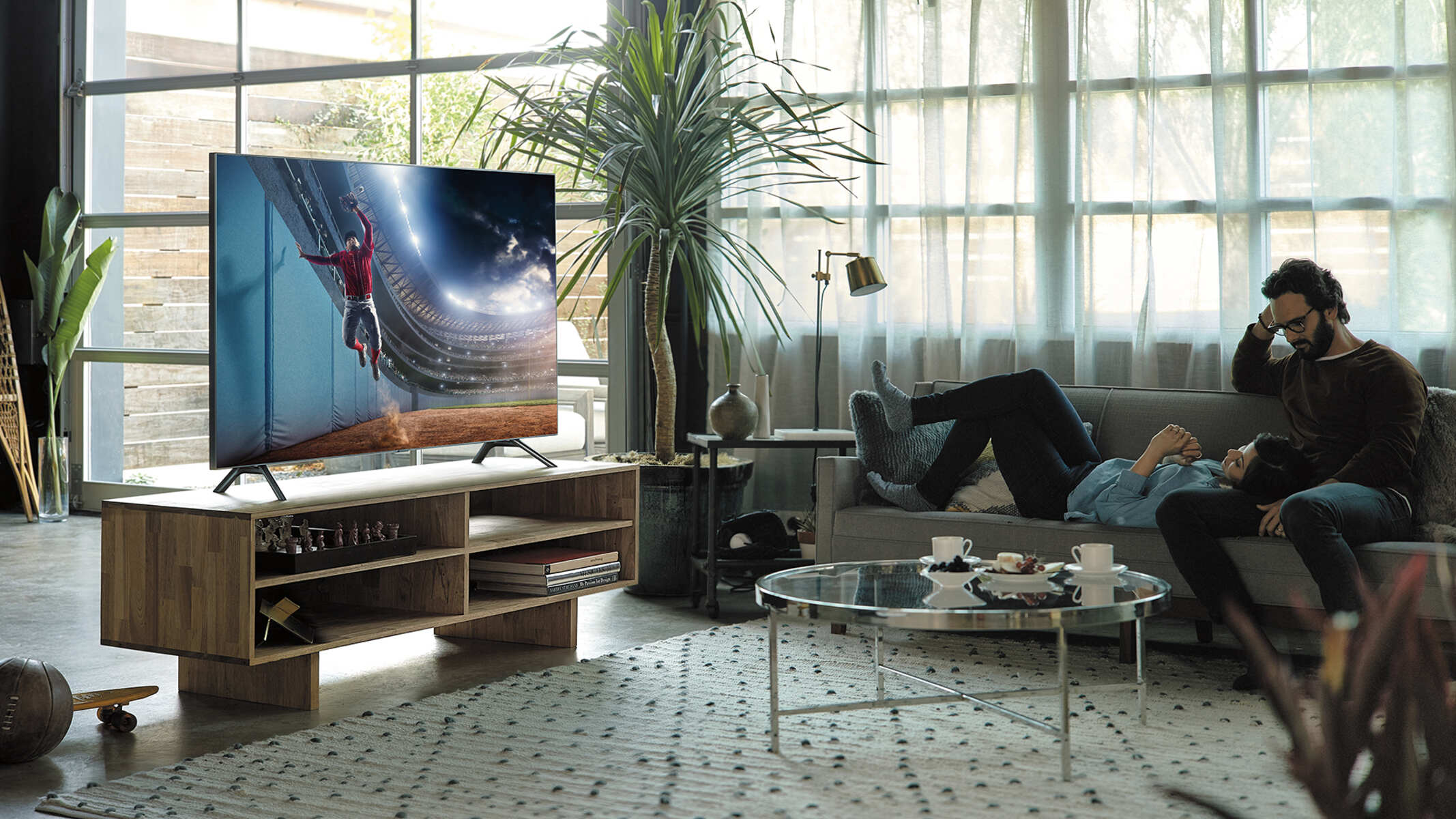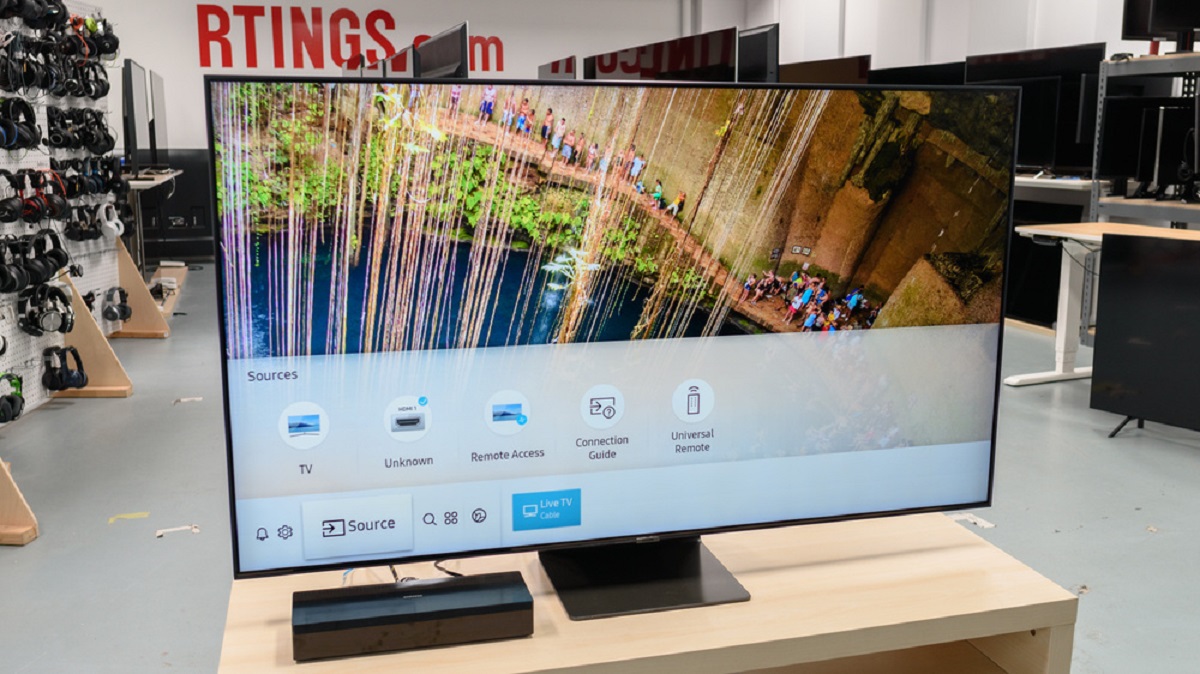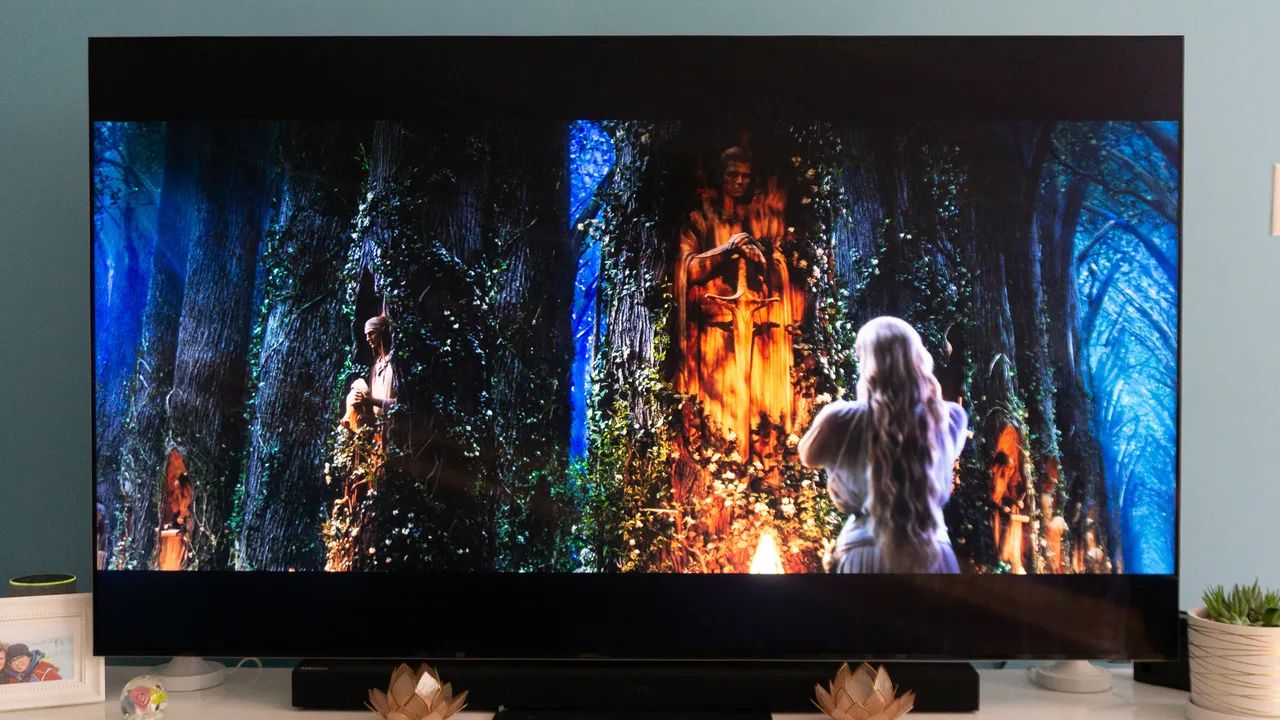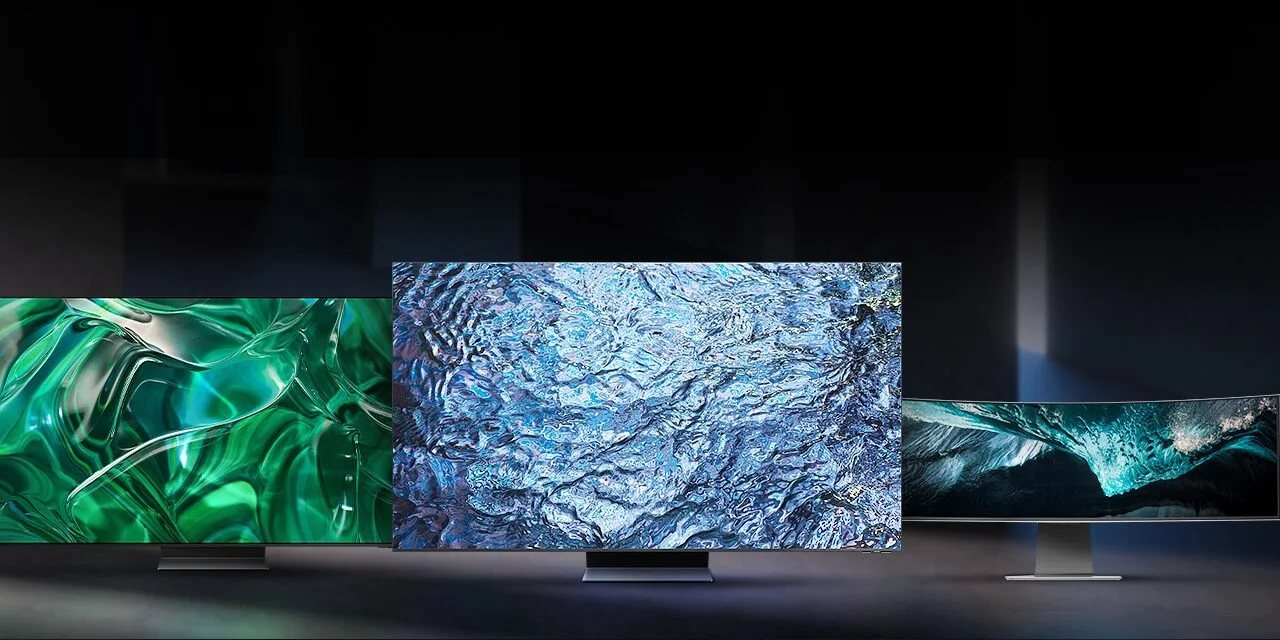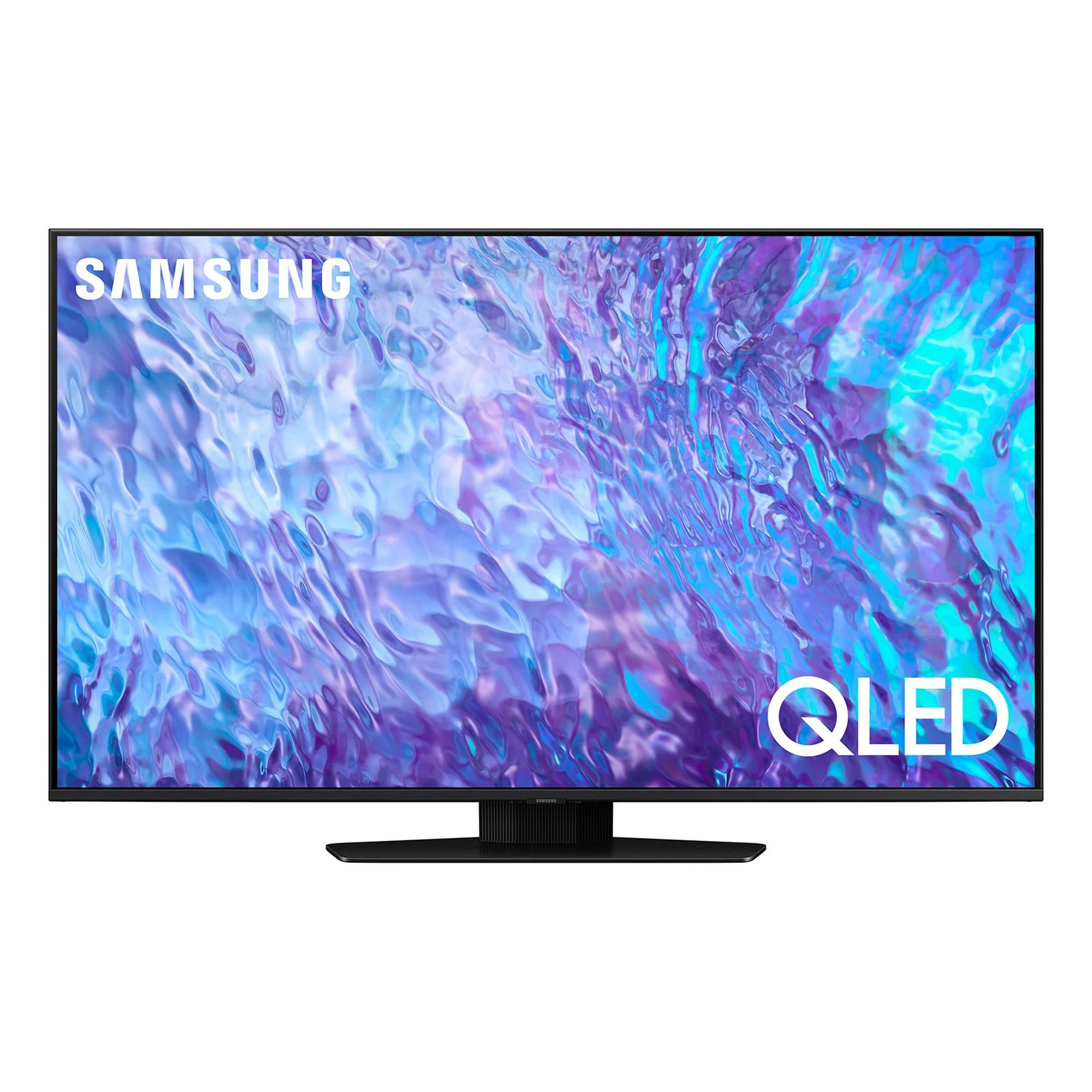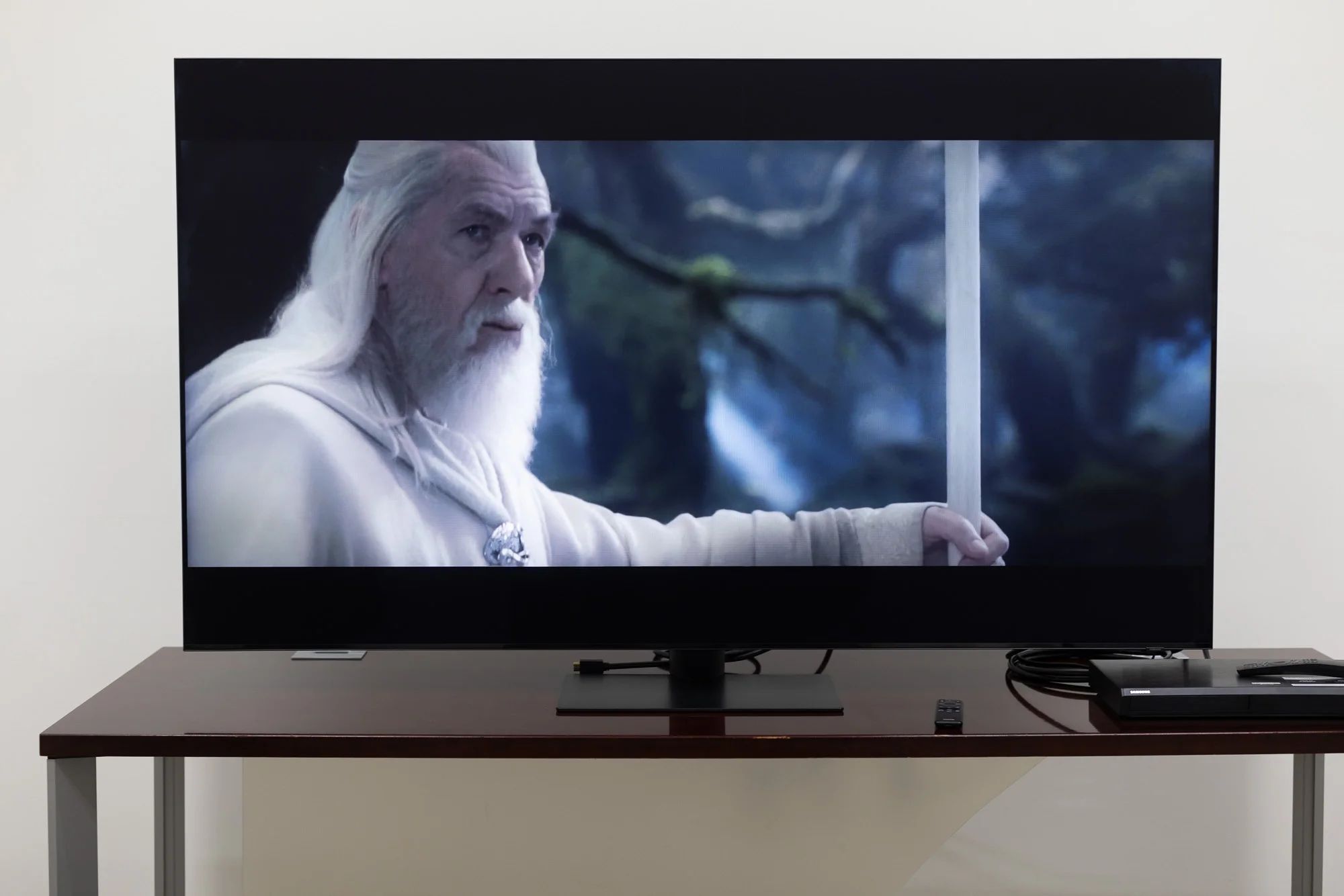Introduction
Are you looking to enhance the audio experience of your Samsung 2018 QLED TV from the Q6Fn series? While QLED TVs are known for their stunning visuals, the built-in speakers may not always deliver the desired sound quality. Luckily, with the ability to connect external speakers, you can take your TV viewing to the next level by enjoying richer, more immersive audio.
In this article, we will guide you through the process of adding external speakers to your Samsung 2018 QLED TV (Q6Fn series). Whether you want to set up a surround sound system for a home theater setup or simply connect a soundbar for enhanced audio, we will provide step-by-step instructions and troubleshooting tips to ensure a smooth and successful setup.
We understand that not everyone is a tech expert, so rest assured that this guide is designed to be user-friendly and accessible to all. Whether you’re a tech-savvy individual or a beginner, we’ve got you covered. Let’s dive into the world of external speakers and enhance your TV audio experience!
Step 1: Check the TV’s Audio Output Options
Before you choose the type of external speakers to connect to your Samsung 2018 QLED TV, it’s important to first check the available audio output options on your TV. This will help you determine the compatibility and connection options for the external speakers.
To get started, grab your TV remote and follow these steps:
- Press the “Home” button on your remote control to access the TV’s menu.
- Select “Settings” from the menu options.
- Scroll down and find the “Sound” or “Audio” settings. Click on it to access the audio settings menu.
- In the audio settings menu, look for the “Audio Output” or “Speaker Settings” option. Click on it to view the available audio output options.
Typically, Samsung QLED TVs offer various audio output options, including:
- TV Speakers: This option utilizes the built-in speakers of the TV as the audio output.
- Optical Output: Also known as the Digital Audio Out (Optical) or S/PDIF, this option allows you to connect external audio devices, such as soundbars or audio receivers, using an optical cable.
- HDMI ARC (Audio Return Channel): If your TV and external speakers support HDMI ARC, you can connect compatible devices using an HDMI cable. This allows for two-way communication between the TV and speakers, eliminating the need for a separate audio cable.
- Bluetooth Audio: Some Samsung QLED TVs also support Bluetooth connectivity, allowing you to connect Bluetooth-enabled speakers or sound systems wirelessly.
Once you have identified the available audio output options on your TV, make a note of them. This information will come in handy when selecting the appropriate type of external speakers in the next step.
Step 2: Choose the Type of External Speakers
Now that you are familiar with the audio output options on your Samsung 2018 QLED TV, it’s time to choose the type of external speakers that best suit your needs and preferences. The type of speakers you choose will depend on factors such as your budget, space availability, and desired audio setup.
Here are some popular options for connecting external speakers to your QLED TV:
- Soundbar: A soundbar is a convenient and space-saving option that can significantly enhance your TV’s audio. These long, slim speakers are designed to sit in front of your TV or be mounted on a wall. They often come with built-in amplifiers and multiple drivers to deliver a wider soundstage. Soundbars can be connected via optical, HDMI ARC, or Bluetooth, depending on your TV’s supported audio output options.
- Home Theater System: For a more immersive audio experience, consider setting up a home theater system. This typically includes a combination of a receiver or amplifier, multiple speakers, and a subwoofer. With this setup, you can enjoy surround sound and a more cinematic experience right in your living room. Home theater systems can be connected via HDMI ARC or optical connections.
- Wireless Speakers: If you prefer a clutter-free setup, wireless speakers are worth considering. These speakers eliminate the need for long wires and cables, allowing you to place them wherever you want in the room. Wireless speakers can be connected to your TV via Bluetooth, ensuring a seamless and convenient setup.
It’s important to choose speakers that are compatible with the audio output options available on your TV. Refer to the notes you made in the previous step to ensure a proper connection. Additionally, consider factors such as sound quality, brand reputation, and budget when making your decision.
Once you have selected the type of external speakers you want to connect, proceed to the next step to learn how to physically connect them to your Samsung QLED TV.
Step 3: Connect the Speakers to the TV
Now that you have chosen the type of external speakers for your Samsung 2018 QLED TV, it’s time to connect them. The connection process will vary depending on the type of speakers you have selected and the available audio output options on your TV. Follow the instructions below to connect your speakers:
- Connecting a Soundbar:
- If your soundbar has an HDMI ARC port, use an HDMI cable to connect the soundbar to the HDMI ARC port on your TV.
- If your soundbar has an optical input, use an optical cable to connect the soundbar to the optical output on your TV.
- For a wireless soundbar, follow the manufacturer’s instructions to pair it with your TV via Bluetooth.
- Connecting a Home Theater System:
- Connect your home theater receiver or amplifier to your TV using an HDMI cable. Make sure both devices support HDMI ARC.
- If your home theater system does not support HDMI ARC, you can use an optical cable to connect the optical output on your TV to the corresponding input on your home theater receiver or amplifier.
- Connect the speakers to the receiver or amplifier using speaker wires. Refer to the manufacturer’s instructions for proper speaker placement and connection.
- Ensure all connections are secure and tight.
- Connecting Wireless Speakers:
- Follow the manufacturer’s instructions to set up your wireless speakers and pair them with your TV via Bluetooth.
- Make sure the Bluetooth connection is stable and within range.
Once you have completed the connections, turn on your TV and speakers. Use the TV remote to adjust the volume and make sure the sound is coming from the external speakers.
If you encounter any issues with the connections, refer to the troubleshooting section in the next step for assistance.
Step 4: Adjust Audio Settings on the TV
Now that you have successfully connected your external speakers to your Samsung 2018 QLED TV, it’s time to fine-tune the audio settings to optimize your audio experience. Adjusting the audio settings will allow you to customize the sound based on your preferences and the capabilities of your external speakers.
Follow these steps to adjust the audio settings on your TV:
- Using your TV remote, navigate to the “Home” button and select “Settings.”
- Scroll down and find the “Sound” or “Audio” settings and click on it.
- In the audio settings menu, you will find various options to adjust the audio:
- Sound Mode: Depending on your TV model, you may have different sound modes to choose from, such as Standard, Movie, Music, etc. Experiment with different modes to find one that suits your preferences.
- Equalizer: Some TVs allow you to adjust the equalizer to fine-tune the audio frequencies. You can increase or decrease certain frequencies to enhance bass, treble, or overall sound balance.
- Volume Leveling: This feature helps normalize the volume level between different sources or channels, preventing sudden volume changes.
- Audio Delay: If you experience a delay between the audio and video, you can adjust the audio delay setting to synchronize them properly.
While adjusting the audio settings, it’s a good idea to test the sound by playing various content such as movies, music, or TV shows. This will help you fine-tune the settings to deliver the best audio experience.
Remember, the audio settings on your TV may vary depending on the model and software version. Refer to the TV’s user manual or visit the manufacturer’s website for more detailed instructions specific to your TV model.
Now that you have adjusted the audio settings, sit back, relax, and enjoy the enhanced audio experience provided by your external speakers!
Step 5: Troubleshooting Common Issues
While connecting and configuring external speakers to your Samsung 2018 QLED TV is usually a straightforward process, there might be instances where you encounter issues or face challenges. In this step, we will discuss some common issues that may arise and provide troubleshooting tips to help you resolve them.
Here are some common issues you may encounter when connecting external speakers:
- No Sound or Low Volume: Ensure that the volume on both your TV and external speakers is turned up. Double-check the audio connections and make sure they are properly secured. Also, check the audio settings on your TV and adjust them as needed.
- Synchronization Issues: If you experience a delay between the audio and video, adjust the audio delay settings on your TV. If using a soundbar, make sure it is set to the correct mode (e.g., Bluetooth or HDMI ARC) and that it is receiving the audio signal properly.
- Unexpected Audio Output: If the sound continues to come from the TV’s built-in speakers instead of the external speakers, go to the TV’s audio settings and ensure that the audio output is set to the desired external speaker option (e.g., HDMI ARC or optical output).
- Compatibility Issues: Make sure the external speakers you have chosen are compatible with your TV’s audio output options. If in doubt, refer to the manufacturer’s specifications or consult customer support for assistance.
- Bluetooth Connection Problems: If using Bluetooth speakers, ensure that both your TV and speakers are compatible. Make sure Bluetooth is enabled on both devices and that they are within range of each other. Try disconnecting and reconnecting the Bluetooth connection if necessary.
If you encounter any other issues that are not mentioned here, consult the user manual for your TV and external speakers for further troubleshooting instructions. Additionally, reaching out to technical support or customer service for both the TV and speakers can provide valuable assistance.
By following these troubleshooting tips, you should be able to resolve most common issues and enjoy the enhanced audio experience provided by your external speakers.
Conclusion
Congratulations! You have successfully learned how to add external speakers to your Samsung 2018 QLED TV from the Q6Fn series. By following the step-by-step instructions provided in this guide, you can now enjoy a more immersive and high-quality audio experience while watching your favorite movies, TV shows, or playing games.
Remember, the key steps involved in adding external speakers to your Samsung QLED TV include:
- Checking the audio output options available on your TV
- Choosing the type of external speakers that suit your needs
- Physically connecting the speakers to your TV
- Adjusting the audio settings on your TV for optimal sound
- Troubleshooting any common issues that may arise
Whether you opt for a soundbar, a home theater system, or wireless speakers, the ultimate goal is to enhance your audio experience and take full advantage of your QLED TV’s capabilities. By personalizing the sound settings and troubleshooting any potential issues, you can create a customized audio setup that suits your preferences.
We hope that this guide has provided you with the necessary knowledge and confidence to set up external speakers with your Samsung 2018 QLED TV. Sit back, relax, and enjoy the enhanced audio experience that your favorite movies, TV shows, and games deserve!







